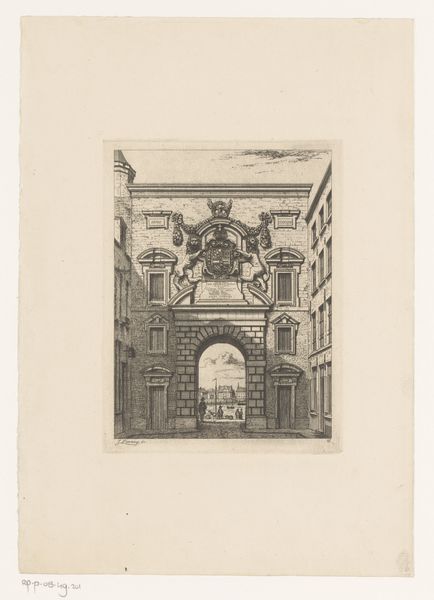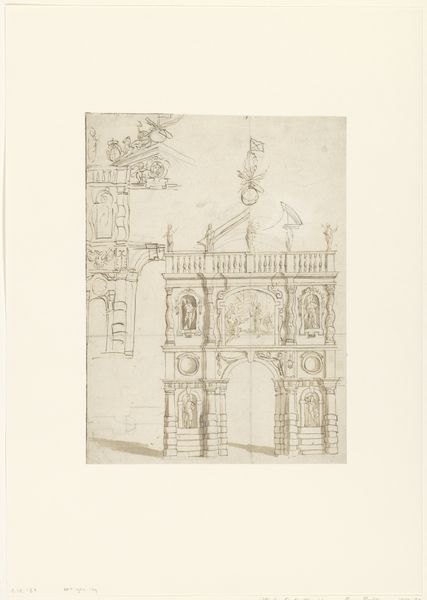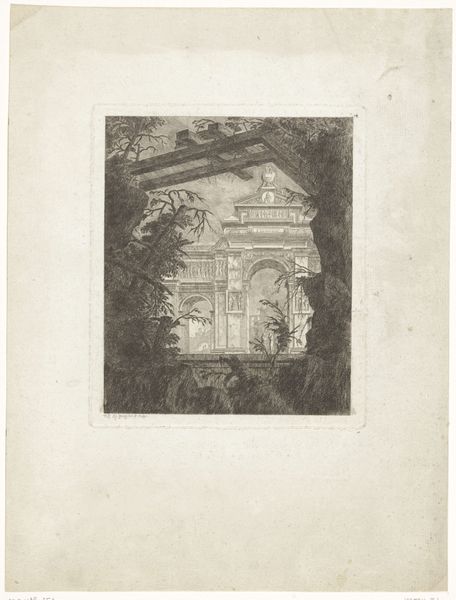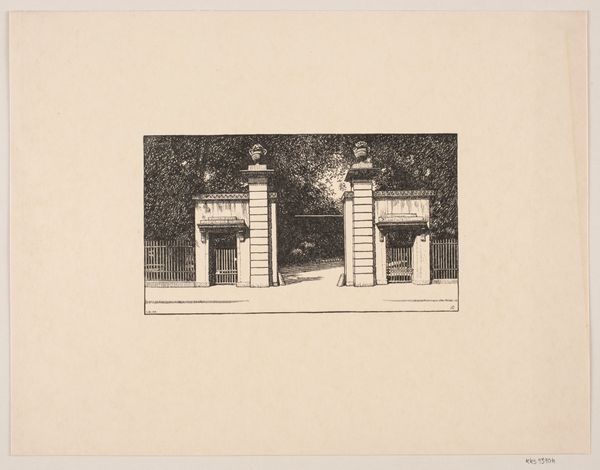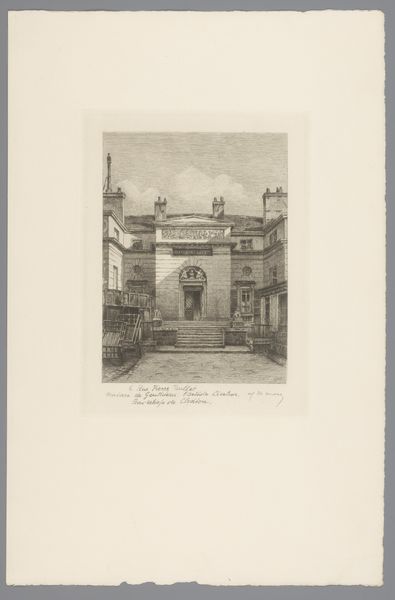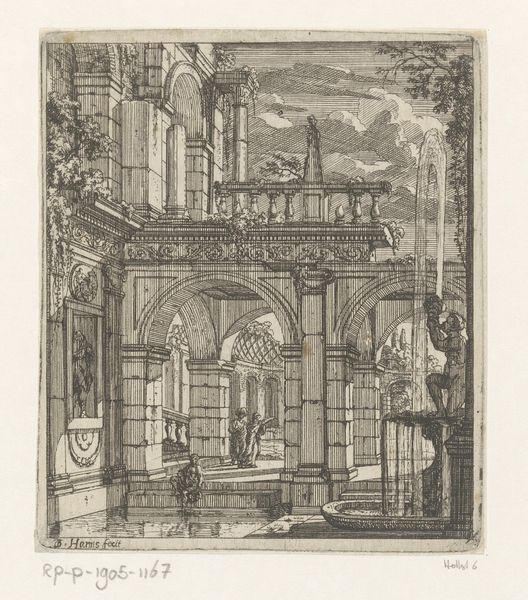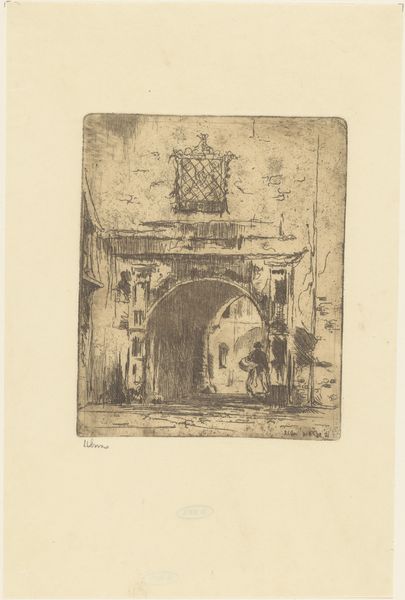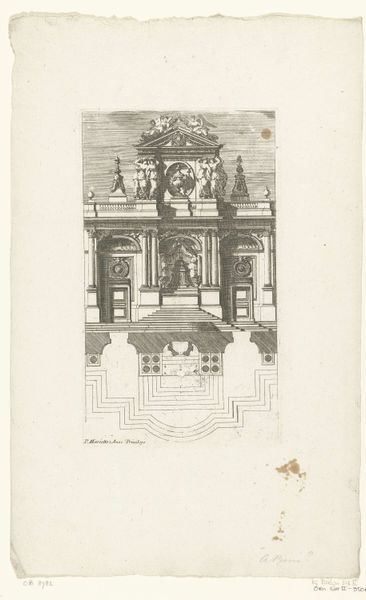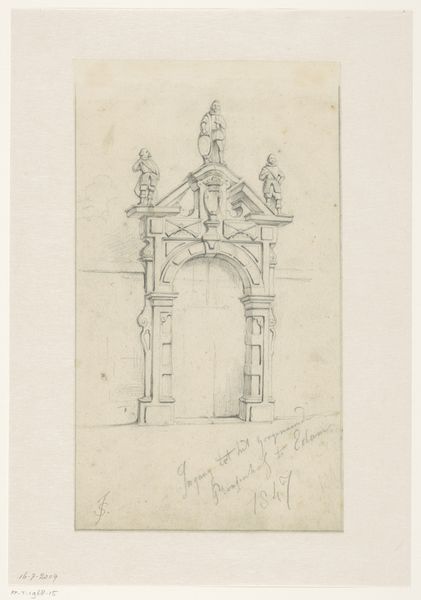
drawing, print, etching, paper, engraving
#
drawing
# print
#
etching
#
paper
#
cityscape
#
engraving
#
realism
Dimensions: height 166 mm, width 123 mm
Copyright: Rijks Museum: Open Domain
Curator: Welcome! We’re standing before Jean Théodore Joseph Linnig’s "Toegangspoort van de Sint-Michielsabdij in Antwerpen," created in 1868. It's a beautiful example of realistic etching. Editor: It does have a certain melancholy feel to it. All that intricate detail focused on a closed gate under a rather turbulent sky. Makes you wonder what's being kept out... or kept in. Curator: Linnig's choice of depicting the gate itself is very deliberate. Gates and doorways often represent thresholds—transitions from one state to another. Considering the abbey’s function, one can imagine countless individuals passing through it to seek spiritual solace. The ball on top feels like it embodies earthly totality. Editor: Thresholds… like the one between belief and doubt, maybe? The architectural details are fascinating, almost obsessively rendered. But there’s a bleakness there too. It's like peering into a memory—a grand one—but one tinged with the acknowledgement that things change, crumble. Curator: Indeed. Realism as a movement in the 19th century emphasized the objective observation of the world. The engraving style perfectly lends itself to precise details. One might suggest Linnig attempts to preserve something enduring within the transience that surrounds it. The Saint Michael abbey's gateway probably functioned more than merely practically; but spiritually for the faithful as well. Editor: A little monument to impermanence, if you will. Like an artifact pulled from a dream. What do you think? The more I look, the more I'm seeing little skulls embedded in the ironwork, gothic touches, perhaps hinting to something grand beyond... Curator: Linnig masterfully uses his medium to offer the viewer a scene that operates as a testament to its time, reflecting architectural traditions and realistic depiction. Editor: Exactly. Each of us standing here might perceive the artwork differently, colored by the sum total of what came before. Curator: Thank you for taking this journey with us, pondering Linnig’s piece together. Editor: Thanks indeed! See you at the next gate, perhaps one that leads elsewhere entirely.
Comments
No comments
Be the first to comment and join the conversation on the ultimate creative platform.


